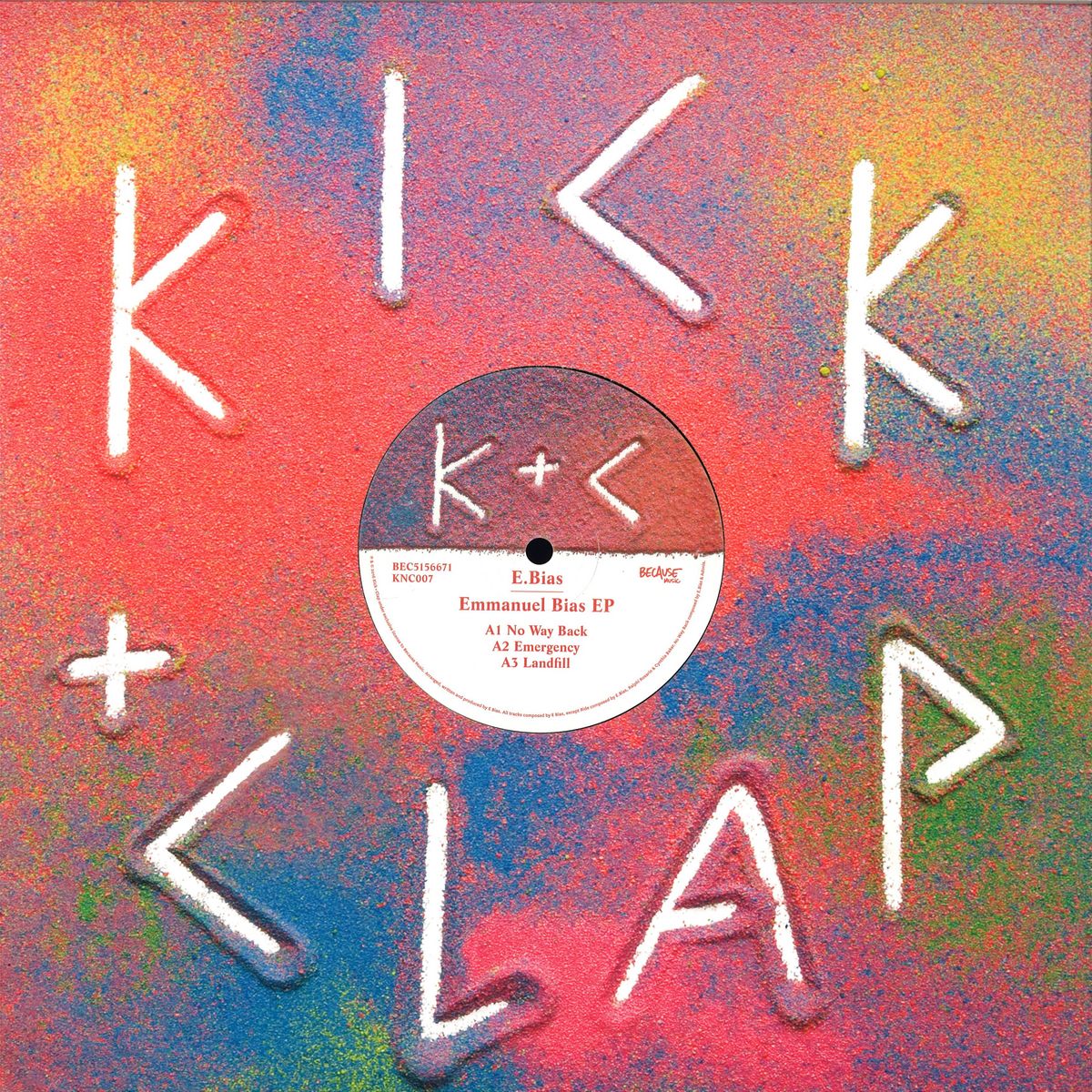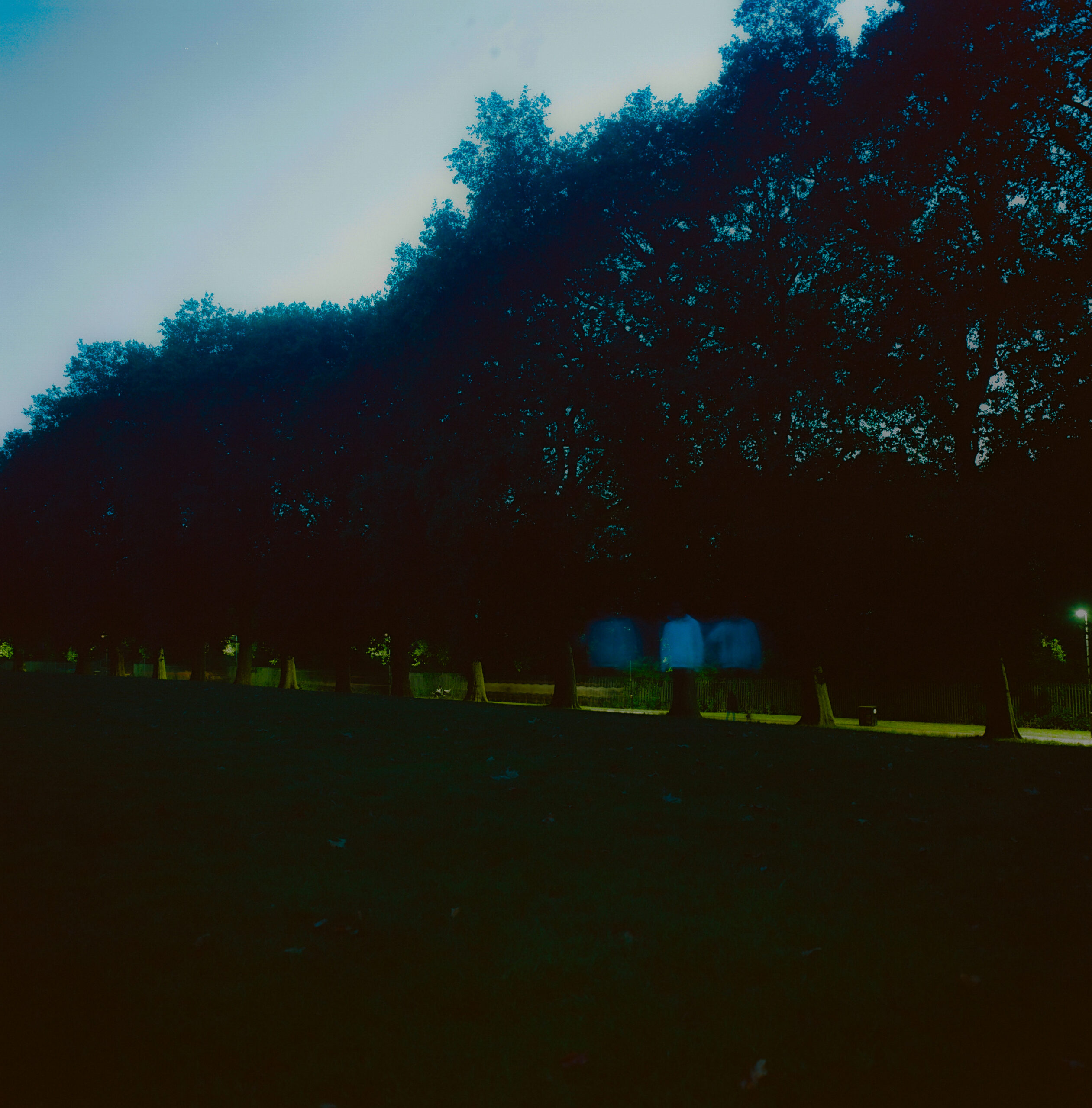Track By Track: Emmanuel Bias – The E.Bias Ep

As far as collaborations go this one is pretty good. Described as an Adriatic new-wave supergroup the band is comprised of Franz Ferdinand's Paul Thomson, Richard Youngs, Turner-Prize nominated artist Luke Fowler and the record is set for release on Django Django member Dave Maclean's label. How about that eh?
Emmanuel Bias is a band focussed on telling the fictional tale of one man's musical journey through the mid 80's. He experiences trials and tribulations as a young Italian man learning about the nature of nightlife and electronic music. Read the inspiration behind the project below…
"It's 1983 and Emmanuel Maggi is a worker on the assembly line of the Elka factory in Southwest Ancona, Italy.
At the weekends he travels one hour in his Citroen DS to see the hottest new wave-dance bands like Tuxedomoon and Palais Schaumberg play at the famous Aleph club in Rimini. Saving his wages to buy the new Italian and imported 12” dance and electronic records, he survives from a meagre diet of bread and pasta. Fortunately Maggi is gifted one of the first run of Elka’s new polyphonic synthesisers- The Synthex, designed by his uncle Mario Maggi. In his small bedroom studio The Synthex is at heart of Maggi’s sound- its chords, bass and acid squleches are accompanied by minimal Yamaha RX15 drum programming. Maggi begins to craft his sound, looking both to the new wave bands he hears at the club and the dance 12”s he spends his wages on. After writing a cache of songs sung in broken English, he builds up the courage to present them to resident DJ Achille to play out at the Aleph. Achille is impressed; his equipment is primitive but the music displays a deep, emotional inner life, ordinarily concealed by Maggi’s focussed and taciturn façade. In 1985 Emmanuel plays a handful of wild live sets as E.Bias at clubs across Italy including his beloved Aleph in Rimini, the Marabu in Reggio and the legendary Cosmic (Disco) in Verona.
His music was never to reach a wider public. In the late 80’s, he loses interest in performing live and begins to immerse himself more deeply in the Catholic faith, withdrawing from the music scene and his studio, devoting his time to family life.
It's 2010 and Richard Youngs receives a letter from Maggi who is enchanted by his recent “Ultrahits” record. He sends his early E.Bias 80’s demos to Youngs as he recognises him as a kindred spirit. After reading a damming review of Youngs' recent project with Fowler in the Wire magazine a few years later- Maggi re-connects, offering sympathies and suggesting the possibility of a future collaboration with the duo. Maggi sends lyrics and rhythm tracks from his shelved debut album. As singing in the English language was never his strong point he suggests Richard voices his words.
Fowler and Youngs decide to team up with fellow traveller Thomson to realise the full dancefloor potential of the project. After completing the new demos of Maggi's songs, the three discuss the title for the project. Feeling that the songs are so indebted to Emmanuel Maggi they decide to dedicate the record to him; hence they name of this record; The Emmanuel Bias or E.Bias for short."
Got all of that?
We spoke to the group and invited them to take us through their finished product below, track by track…

There's a sense in which E.Bias is a concept E.P., each track is part of a whole defined by a sound world handed to us by forgotten Italian producer Emmanuel Maggi based on his work in the 1980s.
'Too Far Back' announces this sound world…
The Chicago House references are there with a lyrical nod to Adonis's No Way Back, but the stuttering Serge details and the portamento-ed Casio keyboard are somehow 'wrong', as is the very un-American vocal. In using the Casio so prominently on all these tracks – we're paying homage both to our own musical origins and to the circumstances of so many great original House records, which were produced in home studios with whatever cheap second hand gear the creators could lay their hands on.
'Rescue' starts austerely – random white note jazzy chords over a basic beat…
We've played a version in concert as AMOR – our fleshed out disco project with double bassist Michael Francis Duch – which arose from the ashes of the E.Bias project.
Landfill
The voice is heavy with echo, and the wooden rimshot high in the mix. These off-kilter elements and the way the organ follows the bass, mark this track out from the others.
'Share' has backing vocals…
The only track where Luke and Paul join in with the singing. It feels appropriate, we're sharing after all. The breakdown in the middle has the bass becoming a single held tone. All the tracks on this EP were made with a simple midi sequencer and original synths (Casios, TX7s and a single Yamaha drum machine: the Rx11). An important part of the sound is the grittiness of those early analogue or digital synths/drum boxes and the refreshing limitation of their preset sounds.
Ride
Announced with a galloping rhythm. The long arpeggiated section is introduced by calling out Luke by name to trigger the note pattern. The bassline of this track pays homage to Ralph Rosario's house classic You Used To Hold Me. This track has the most Buchla-ized vocals. On the original mixes the vocals were dry and we were never totally happy with that. When Luke was doing a residency at Harvard he had access to their original Buchla 100 – so he fed the vocals through its spring reverb and also through a early Lexicon digital delay. This was about the extent of the production – the rest was pretty much recorded live. Towards the end of this track the percussion drops out and the coda feels like a precis of systems music.
'Pleasure' is the wistful ballad at the close…
It is a dilemna: do you go up or down at the end? We chose down, closing with reverbed out artificial strings, for which we flew in a friend's Siel Orchestra; keeping in the spirit of Maggi's original instrumentation.
Buy the release HERE.



















![2354_WALLET_FOR_VINYL_313X313_SPINE_3MM [Convertido]](https://www.theransomnote.com/wp-content/uploads/2024/04/SLEEVE-FRV046-copia.jpg)


